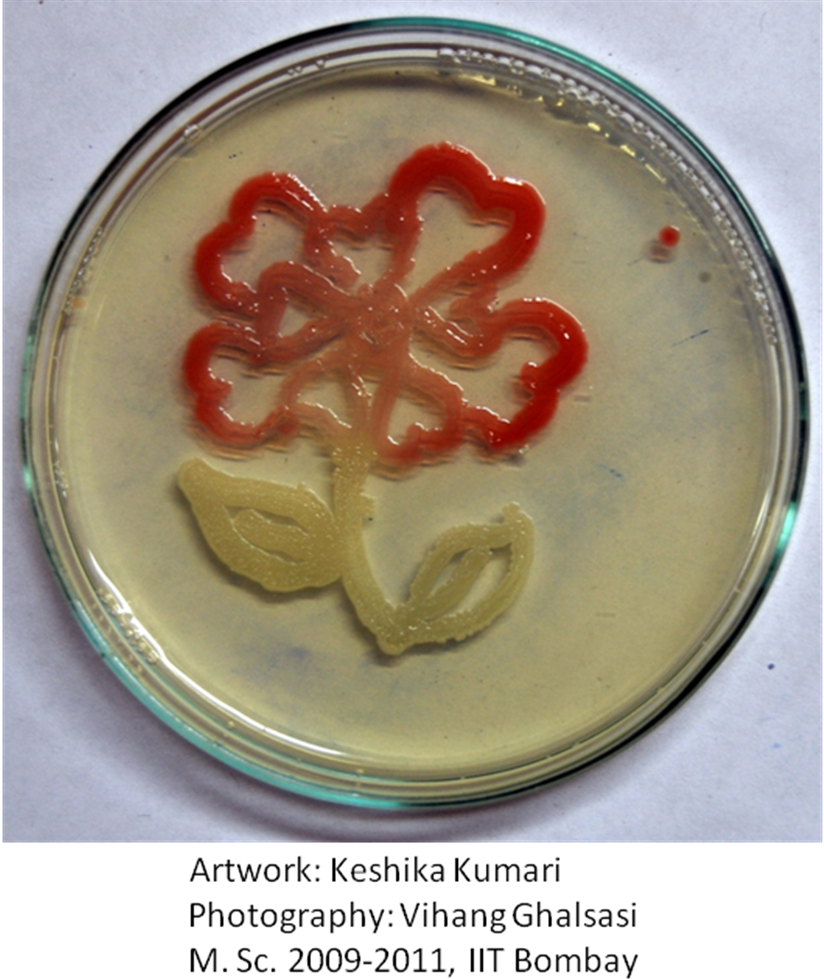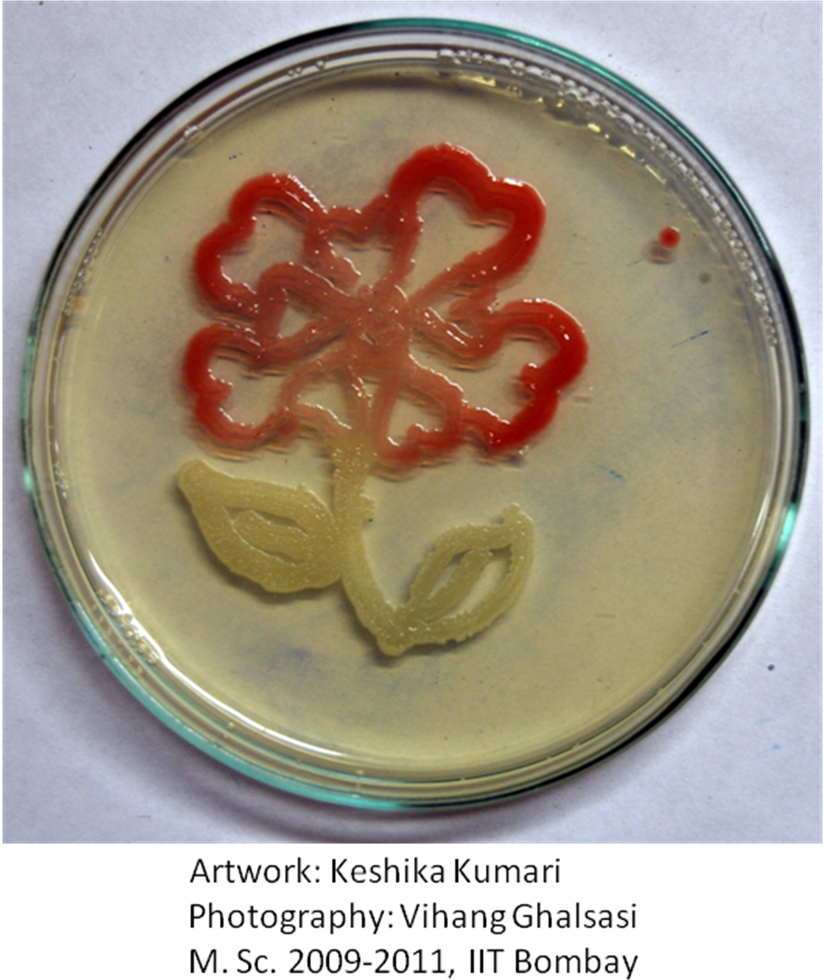
When I am asked where I work and reply “IIT Bombay” the most common question that follows is “What do you teach?”. To this I inevitably reply “Molecular biology and microbiology, but my lab does research on malaria”. Now, after this happened several times, I simply had to introspect and ask myself why I am so defensive when it is assumed that I am a teacher. Perhaps it has something to do with my perception of myself which is as a scientist; perhaps it has to do with people’s perception of teachers. The introspection has been quite useful though and made me realize that I really enjoy teaching and find that it is complementary to my research. As part of this process, I came up with a Top Five list of why teaching is fun so here goes:
# 5) Teaching is instant gratification: when one prepares a good lecture knowing the main points that need to be conveyed, it is sheer delight to watch the sparks in the eyes of students who have just realized they learnt something different and interesting. They ask questions that make you think more deeply and the dialogue has begun from the very first hour. Contrast this to the time taken in getting my lab up and running: weeks would go by waiting for equipment to be purchased, another few weeks for it to arrive, months before students got the hang of culturing Plasmodium falciparum and years before we could gather enough data to think of publishing a paper. Teaching gives me immediate rewards!
 # 4) Teaching is creative (Part 1): getting the point across is not always easy and I have had to think up interesting ways of doing this. I’ll give you an example. My first month of teaching molecular biology at IIT Bombay was a disaster. I had a ‘syllabus’ and a few prescribed textbooks and no idea how much Indian students were taught at the Bachelor’s level since my own B. Sc. degree was a over decade old by then. After teaching facts from the textbooks for a month, I couldn’t help being depressed by the sneer on one of the student’s faces (Vinit, I can never forget him). Most of the students were too polite to say anything but Vinit’s inability to mask his emotions and ability to disagree with me constantly on factual information was just becoming too much to bear. Rather than berate him (easy to do as I was in a position of power) I decided to accept his not-so-subtle message that the students already had enough of facts and I needed to give them something more. I realized that what I myself loved about science was how every little strange thing is interesting (e.g. how do bacteria ‘know’ their mid-point so they can divide, why has the language of the genetic code not changed on this planet in contrast to human languages which have evolved). I now start every new topic with a few slides on ‘Who cares?’ and towards the end of the course have the students form groups and present for a few minutes why a topic is cool, exciting and worth studying.
# 4) Teaching is creative (Part 1): getting the point across is not always easy and I have had to think up interesting ways of doing this. I’ll give you an example. My first month of teaching molecular biology at IIT Bombay was a disaster. I had a ‘syllabus’ and a few prescribed textbooks and no idea how much Indian students were taught at the Bachelor’s level since my own B. Sc. degree was a over decade old by then. After teaching facts from the textbooks for a month, I couldn’t help being depressed by the sneer on one of the student’s faces (Vinit, I can never forget him). Most of the students were too polite to say anything but Vinit’s inability to mask his emotions and ability to disagree with me constantly on factual information was just becoming too much to bear. Rather than berate him (easy to do as I was in a position of power) I decided to accept his not-so-subtle message that the students already had enough of facts and I needed to give them something more. I realized that what I myself loved about science was how every little strange thing is interesting (e.g. how do bacteria ‘know’ their mid-point so they can divide, why has the language of the genetic code not changed on this planet in contrast to human languages which have evolved). I now start every new topic with a few slides on ‘Who cares?’ and towards the end of the course have the students form groups and present for a few minutes why a topic is cool, exciting and worth studying.
I also love the way discoveries are made, the scientific method and the wide range of experimental approaches biologists take to answer their favorite questions. Around this time, my friend Connie Chow who was teaching at Simmons College in Boston told me about a textbook by Robert Weaver that explained molecular biology through experimental approaches. The pieces of the puzzle clicked into place and ever since then I have taught the subject by analysis of experiments. It is really fun to see the looks on student’s faces when we discuss the Meselson and Stahl experiment on semi-conservative DNA replication (something they have memorized by heart) and I point out that the bacterial culture used was not synchronized. So how could they have seen such discrete bands of heavy, intermediate and light DNA? I have been teaching this course for the past 8 years and the feedback is excellent. Thanks, Connie and Vinit!
# 3: Teaching is creative (Part 2): I have been teaching a lab course in microbiology and in addition to conveying concepts and lab techniques to the students, I devise games that help them learn. For example, we teach the same lab in two batches and in the second half of the semester we have a competition between the two batches, with each competing for the prize of an ice-cream treat from me (not a huge prize I will admit but very nice during the Mumbai summer). The criteria for evaluation are: how many petri dishes are broken by each batch, how many plates are sterile, how well the batches manage their time, teamwork (measured by the number of confused students wandering around), reproducibility of results, exciting results, etc. This game makes the students more confident, independent, careful about their technique and encourages them to plan better and work together well.
Creativity is also encouraged in the students as microbiology, like much of biology, is incredibly visual. The students isolate colorful bacteria from soil, the lake near IIT or food from the hostels and do biochemical tests that (among other things) make Triple Sugar Iron slants turn pink, yellow and black. At the end of the course the students did a microbiology art project that we photographed and uploaded on the course website. Check out the ‘microbial’ flower in the image. Microbiology is fun!
# 2) Teaching feeds into my research: I teach molecular biology which covers almost every topic under the sun and this breadth of subjects has kept me in touch with the fundamentals of many research areas. My lab works on regulation of gene expression in the malaria parasite P. falciparum and I can think of several instances where the stuff I taught in class turned out to be really handy in the lab while discussing how to take experiments forward. For example, Balu, a PhD student in the lab, found his project veering in the direction of correct choice of translation initiation codons. We were talking about how to test which of two AUG codons was the preferred start codon. I had just taught translation in class the week before and vividly remembered Marilyn Kozak’s classic experiments using the pre-proinsulin gene with two start codons that were out-of-frame, the choice of each one resulting in translation of the pre-proinsulin protein or not. Balu and I figured out that we could use a similar approach in P. falciparum and the project continued merrily forward. Teaching forces me to be very good at the fundamentals which always help while doing research!
# 1) The number 1 reason why teaching is fun: to teach well you have to be willing to learn. Every time I teach, even a topic that I think I know quite well, I learn a lot myself. This is certainly true for courses like molecular biology, microbiology and genetic engineering. It is even more fun to teach a new course that is out of your comfort zone. I taught cell biology where the syllabus was largely about microtubules, cytoskeleton, motors, organelle trafficking and cell division. What fun it was to learn how molecular motors are directional and move their cargo around in the cell. Equally exciting was reading how scientists measured the ‘step size’ of myosin and whether it ‘walks’ hand over hand or like an inchworm. Analogies are always useful and being a Bombay girl I thought up the analogy of the General Post Office as the sorting place (Golgi) where postmen (motors) use the directional Mumbai trains (microtubules) to deliver mail that has PIN codes (targeting signals). Coincidentally, one of the recent projects in the lab involves studying microtubules in P. falciparum and my teaching helped to build a foundation of information to understand this topic better. Teaching is a sure way of spending your lifetime learning!